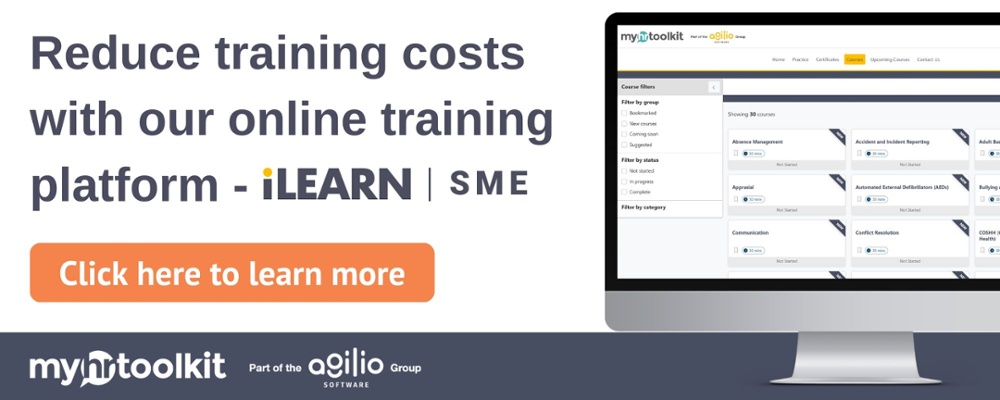The Harvard Business Review wrote back in 2014 about how 5 generations will be working side by side. That time is now well and truly upon us as the average multi generational workforce represents: Traditionalists, Baby Boomers, Gen X, Millennials, and Gen Z.
But how is it best to train a generationally diverse workforce? If you are familiar with the term "herding cats", devising training strategies that cater to all generational composites in your company may just resemble a similarly improbable feat.
The multi generational workforce: define first, train second

Analysing the internal makeup traits and communication preferences of each generation will bring one a step closer to designing training programmes that may resonate with all generations collectively as a unified learner group in the organisation.
1. Traditionalists: The silent conformists
Representing the smallest percentage of the workforce today, Traditionalists' intrinsic tenancies to adhere to authority, rules and, regulations mean these workers will likely comply with any kind of training proposed to them without any resistance.
Remember, however, their affinity towards ‘’Papyrus’’ materials, better known as books, instruction folders and printed manuals, before overwhelming them with digital tech and tools.
Learn more: Is there a digital skills gap in your business?
2. Baby Boomers: My way or the highway

The employees from this generation are highly adverse to change and naturally apprehensive to undertake any actions that may leave them vulnerable or out of sorts. Forget about implementing a cool virtual reality app in their next training exercise, unless you want to be crushed by a wave of judgemental opinions and rebellion.
Training execution should align towards easing them into unfamiliar learning territories as opposed to forcing them to participate in unknown learning realms. Boomers are motivated by accomplishment and actualisation. Hence, training programmes incorporating sufficient challenges, milestones and goals may render excellent developmental gains for these employees.
3. Generation X: Teenage hell-raisers turned business mavericks

Born and raised during analogue times, these digital nomads had to adapt and conquer to survive in a world of increasing automation, communication innovation, and technological advancement.
From the looks of things, this generation is the most self-reliant, creative and responsive to change with 51% per cent of leadership roles occupied by those born between 1965 and 1981 (still not convinced? Maybe the names Dell, Dorsey, Easterbrook, and Musk ring a bell).
Designing training structures for Generation X proves to be quite challenging, as they are easily bored and disengaged. However, web-based platforms with lots of designs and graphics (they learn best from pictures) and limited word content will keep them immersed and interested.
If you are also able to feed their addiction to emails, by offering ample opportunities for questions and suggestions, their training journey going forward will be paved with progression and evolution.
Learn more: How to inspire your Generation X employees
4. Millennials: Me, myself and I

Lobbyists for Millennials describe them as open-minded, upbeat, expressive and passionate. Advocates against, meanwhile, depict them as lazy, entitled, self-obsessed and narcissistic.
Whichever way your opinion blows, this generation will soon dominate the workforce, with a 75% representation figure by 2025. Time is running out to implement effective learning strategies to transition them from unresponsive to absorbed, distracted to attentive, and entitled to engaged.
Training initiatives offering variety, social collaboration and self-directed learning options will appeal to their continuous desires for change, interaction with others and individual discovery.
Learning activities aiming to incorporate within their lifestyles instead of being scheduled events on their calendars will render the most positive developmental outcomes for these employees.
Learn more: How to keep millennials engaged at work
Gen Z: Pursuers of purpose and security

These frugal office babies are just entering the workforce. Generation Z (or iGens) are motivated by meaning and money, a sort of chalk and cheese comparison on the social equality continuum.
“The golden rule of Generation Z training may as well come down to these five words: Don’t patronise, but don’t pander either.”
Designing and delivery of training programmes for these newbies is quite the undertaking as they expect a justification of the training itself (the purpose for them and those around them) as well as a security promise (how will training increase their personal bottom line).
Being the true digital natives of our current era, generation Z requires mobile first and mobile only coupled with intuitive technologies delivering “snack-sized’’ content across a variety of platforms.
They want videos, games, quizzes and soon virtual and augmented reality training tools. Added to the mix comes their requirements for authentic face to face training. Just when you got used to the online-only interaction of the millennial!
Finding the training sweet spot

Redesigning your training programmes to separately cater for each generational group in your company is neither practical nor plausible.
The answer lies in isolating those preferential learning commonalities across these generations to find that sweet spot where training will stick with the experienced Boomer worker right through to the bright-eyed busy tailed graduate employee.
Finding common ground regarding training preferences and behavioural traits may require a bit of targeted googling and the advice of a training expert or two, but without the need to reinvent the training wheel.
Plus, you can keep track of everything with a good training management software system in place, or by utilising a comprehensive online training platform.
Learning customisation per generation is not the answer, but training adaptation for unification, may very well be the solution for multi-generational workforce development.
Read more from our blog

Written by Fiona Sanderson
Fiona is Marketing Manager at myhrtoolkit. Her areas of expertise include HR systems, productivity, employment law updates, and creating HR infographics.


 Holiday Planner
Holiday Planner Absence Management
Absence Management Performance Management
Performance Management Staff Management
Staff Management Document Management
Document Management Reporting
Reporting Health and Safety Management
Health and Safety Management Task Management
Task Management Security Centre
Security Centre Self Service
Self Service Mobile
Mobile




